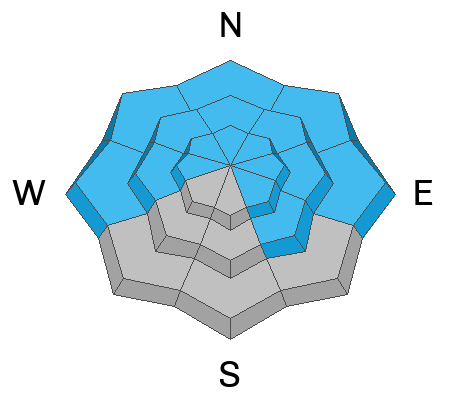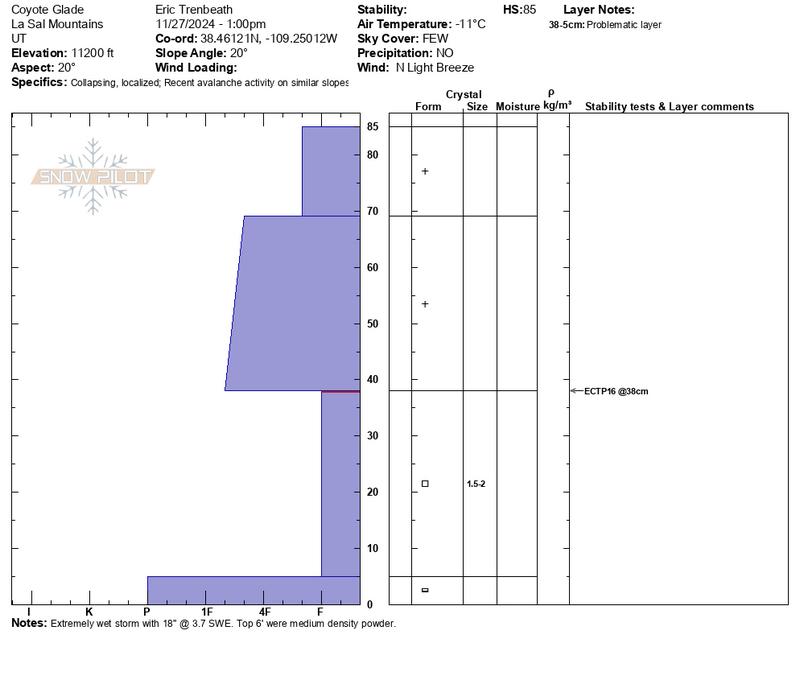Forecast for the Moab Area Mountains

Issued by Eric Trenbeath on
Friday morning, November 29, 2024
Friday morning, November 29, 2024
The avalanche danger is CONSIDERABLE on steep slopes facing W-N-SE. In these areas, a dense slab is sitting on top of a pre-existing, faceted weak layer, and human triggered avalanches are likely.
The danger is mostly LOW on slopes facing SW-S and on low elevation SE aspects. Small avalanches on isolated terrain features are possible.
Conditions remain thin and rocks, stumps, and dead fall still pose a significant hazard.

Low
Moderate
Considerable
High
Extreme
Learn how to read the forecast here











